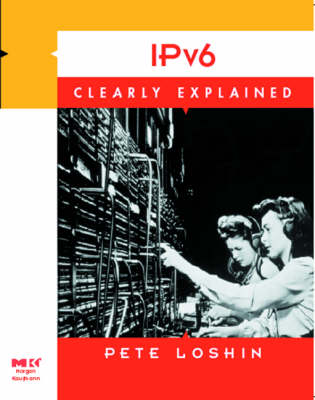Clearly Explained S.
2 total works
To any person engaged in highly sensitive information exchanges, the issue of secure transmissions is a top priority. This book shows readers how to protect themselves and their electronic information in order to enjoy the benefits of worry-free communication technology and digital commerce. It opens with an introduction to the concepts of modern encryption: secret-key encryption, public key encryption, digital signatures, and user authentication mechanisms. It moves into why encryption is necessary, how it can be used to protect information at the individual level, and how cryptographic technologies are implemented in both software and hardware. It also shows how to set up a personal encryption system, and how to use it to protect yourself while browsing the Web, sending and receiving e-mail, or using any Internet application.
IP version 6, or IPv6 for short, is probably the most significant network upgrade in the history of technology. It will require every company in the world selling TCP/IP-enabled software, hardware, or services to evaluate the need to upgrade or modify their products; it will require the users or administrators of virtually every networked computer system on the planet to consider how best to migrate to the next generation of internetworking protocol. Anyone with any interest in the continued viability and growth of the Internet or TCP/IP networking needs to read this book to better understand how IP works, why IPv6 will work better, and what they must do to be prepared for the change. Building on discussion of how the current versions of IP and other protocols in the TCP/IP suite work and behave, in the first part I discuss the problems that arose over the past 20 years, as well as the various solutions proposed to solve them. Also included are an introduction of the new features, functions, and operation of the new IPv6 and related protocols like the Internet Control Message Protocol (ICMP), Domain Name System (DNS), and routing protocols.
The second part delves in detail into the workings of the new protocols, with particular attention to handling IPv6 addresses, IPv6 extensions, IPv6 support for authentication and security, IPv6 anycast and multicast support, and support for mobile hosts in IPv6. Also included here are discussions of IPv6 routing issues and solutions, as well as other protocols, like DNS and ICMP, that will change to accommodate the new version of IP. The final part examines the issues of deployment. Discussed here are strategies that network product vendors are taking with their products as well as strategies for transition appropriate for individual users and smaller organizations as well as for larger organizations with correspondingly larger networks. Options include tunneling approaches, dual-stack approaches, and development of an Internet backbone structure supporting IPv6. Rounding out the book are appendices that include a list of relevant RFCs as well as the complete text of several of the most important and interesting IPv6 RFCs, and an index.
The second part delves in detail into the workings of the new protocols, with particular attention to handling IPv6 addresses, IPv6 extensions, IPv6 support for authentication and security, IPv6 anycast and multicast support, and support for mobile hosts in IPv6. Also included here are discussions of IPv6 routing issues and solutions, as well as other protocols, like DNS and ICMP, that will change to accommodate the new version of IP. The final part examines the issues of deployment. Discussed here are strategies that network product vendors are taking with their products as well as strategies for transition appropriate for individual users and smaller organizations as well as for larger organizations with correspondingly larger networks. Options include tunneling approaches, dual-stack approaches, and development of an Internet backbone structure supporting IPv6. Rounding out the book are appendices that include a list of relevant RFCs as well as the complete text of several of the most important and interesting IPv6 RFCs, and an index.

